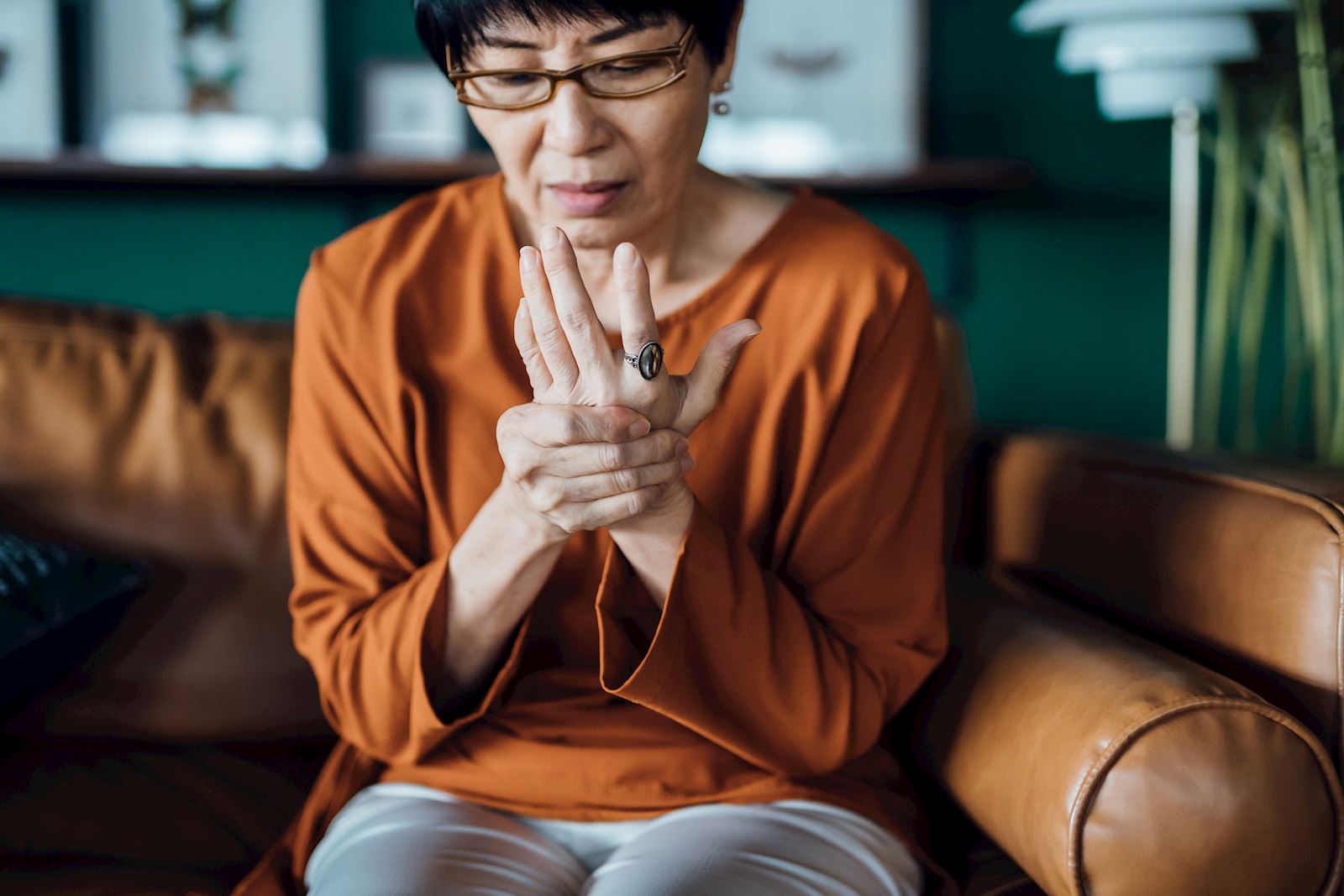Being female is the biggest risk factor for osteoporosis.
Posted
by Featured Provider Michael Fazio on Thursday, September 8, 2022

Of the 10 million Americans who have osteoporosis, 80% are women. Do a little math and you’ll find that there’s a one in four chance you’ll be one of them after turning 65.
That's a high risk for a disease that increases health risks as you age. Osteoporosis makes you more fragile, and more likely to fracture or break a bone — even during simple, everyday activities. And those injuries can reduce your mobility and quality of life throughout your senior years.
Osteoporosis is Not Just for Older Women.
“Women are more commonly affected by this. Typically, postmenopausal women over the age of 65. But there are medications and other medical conditions that predispose you for bone density loss,” says Michael Fazio, DO, radiologist at The Iowa Clinic.
While womanhood gives you a 25% chance of having osteoporosis after the age of 65, these other factors can increase your chances as early as your 30s.
“We look at age, race, lifestyle choices and medical history,” Dr. Fazio says. “There’s a checklist we go through to see if you have any of the risk factors.”
Most of these risk factors are out of your control. The effects of medications or other health conditions are particularly complex because they can disrupt the natural equilibrium of your bones.
“There is always bone breaking down and new bone being built up. There are complex signal pathways that let your brain regulate and signal to your body how much bone it should be producing and how much it should be resorbing,” explains Dr. Fazio. “When this process gets disrupted, it can cause an imbalance in your bone mineral density and predispose you to osteoporosis.”
The bone system interacts with other organ systems, which means osteoporosis can stem from some unlikely sources. Some of these conditions include:
- Celiac disease – The small intestine has trouble absorbing nutrients, including calcium, an essential building block for your bones.
- Inflammatory bowel disease –A combination of the chronic inflammation of Crohn's disease or ulcerative colitis and the medications that manage it commonly cause the bones to lose mass.
- Menopause – Low estrogen levels lead to more bone resorption. Thus, the heightened risk for postmenopausal women.
- Asthma – Side effects of the anti-inflammatories and corticosteroids commonly used to manage asthma affect your body’s calcium absorption, bone formation and hormone production. Avoidance of asthma triggers and exercise further weakens your bones.
- COPD – Similar issues effect those with COPD. You can also suffer from vitamin D deficiency, which is another critical nutrient in bone production.
- Kidney disease – Damaged kidneys can’t keep up with their job of removing phosphorus, causing an imbalance of calcium and phosphorus that harms your bones.
- Liver disease – The liver is another organ that, when damaged, can throw off the bone health equilibrium. Nearly a third of people with liver disease also suffer from osteoporosis.
Routine bone density tests help you manage your risks.
With so much out of your control, there’s one thing you can do to manage your risk of osteoporosis: get a bone density scan regularly.
Bone density scans use dual-energy X-ray absorptiometry — DEXA, for short. The technology is so well-known that bone scans are more commonly called DEXA scans. This test sends a small dose of radiation into your bones to provide a measurement of the calcium and other minerals that make up the bones.
“It takes a very low dose X-ray to calculate bone mineral density in specific areas,” explains Dr. Fazio. “We look at the hips, lumbar spine, and in some instances the distal forearm. With measurements in these locations, we come up with a score that’s used in comparison to the normal population.”
“It’s probably the easiest radiology appointment. It’s very quick. It usually takes no more than 5 minutes to complete the scan,” he says.
For women over the age of 65, bone density scans are part of your recommended routine health maintenance, no different than a regular physical or an annual mammogram. If you’re on medication or have a condition that increases your risk of osteoporosis, you may start routine bone density scans much sooner. Regular DEXA scans help monitor bone mineral levels to catch loss before it reaches the level of osteoporosis.
“We keep all your results to measure bone mineral density over time. We can see which way things are going in the right direction, wrong direction or no change at all,” Dr. Fazio says. “By comparing your results to the general population, we know if your changes are within normal variation for your age or if there is more significant mineral loss that may need to be addressed with your provider.”
Osteoporosis is Not Inevitable.
In fact, it can be reversible.
“You can absolutely improve your bone mineral levels,” Dr. Fazio says. “There are lifestyle changes as well as medications that inhibit the resorption of the bone so that you increase your bone density. You can basically down regulate one side of the cycle or up regulate the other side of the cycle.”
Lifestyle changes can help you improve the other side of the cycle and help increase bone density:
- Eat a healthy diet of fruits, veggies and whole grains.
- Add more foods rich in calcium or vitamin D to your diet.
- Stay active with weight-bearing exercises that promote bone growth like walking, jogging or tennis.
- Do lightweight strength training to build muscle mass, which helps improve bone density and prevent the falls that fracture weakened bones.
- Avoid or limit caffeine and alcohol.
- Quit smoking.
“Lifestyle management is one of the things we try to do to increase bone mineral density. We can monitor at follow-up scans either in a year or two years to see if lifestyle changes like exercise or supplements are working,” Dr. Fazio says.
With the right mix of exercise, diet, lifestyle changes — and may be the help of a medication — you can turn back the clock. That’s true whether you’ve been diagnosed with osteoporosis or only have lower levels of mineral loss.
“One of the benefits of bone density measurements is that we can also predict your future risk of having a fracture,” Dr. Fazio says. “We can calculate a 10-year probability and, based on that, start on medications or changes that will benefit you even if you’re not quite osteoporotic.”
Meet This Featured Provider

Learn More About:
Medical Imaging & Radiology,
Women's Center
Michael Fazio, DO joined The Iowa Clinic after spending six years as a staff radiologist in the U.S. Army Medical Corps and sixteen years in the U.S. Army. He believes the best medical care is offered through partnership with his patients in their healthcare in conjunction with a collab... Read More
Accepting New Patients
Other Women's Center
Tags
- medical imaging
- women's center